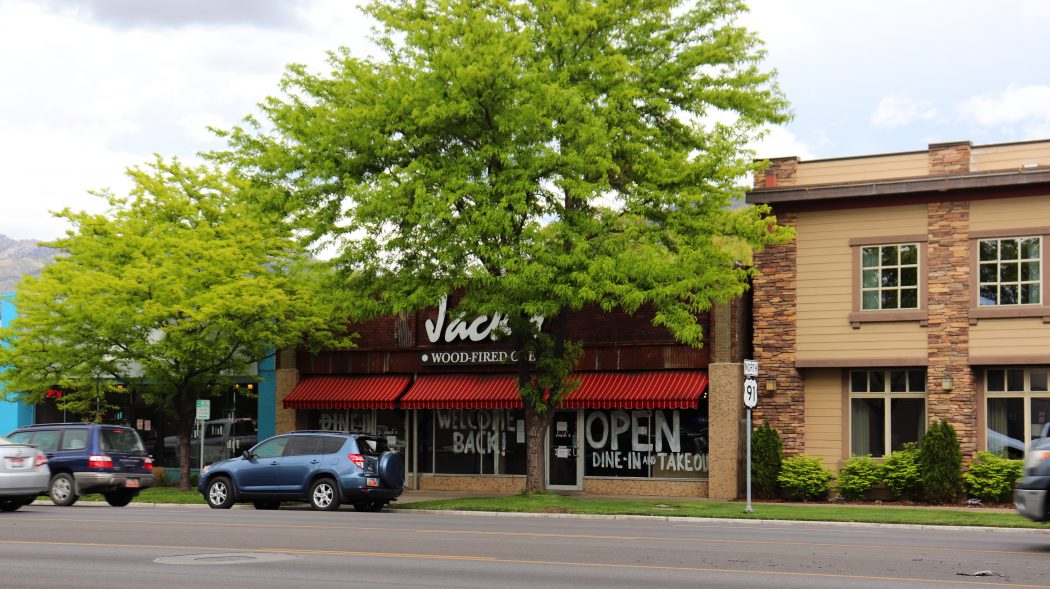Opinion: Utah should pump the brakes on reopening so much, so soon
During the influenza pandemic of 1918, the United States experienced a lull in the spread of the virus over the summer. After the initial wave subsided, a mutated form of the so-called “Spanish Flu” came back with a vengeance during a resurgence in the fall, with an estimated 195,000 Americans dying in October alone.
A shortage of medical workers, soldiers bringing the virus home with them during World War I and an unwillingness to implement quarantine procedures are among the reasons it is believed the second wave was so fatal. While broad refusal to abide by social distancing recommendations was not a culprit of the resurgence, instances of cities ignoring the practice caused the virus to spread like wildfire.
Over a century later, the U.S. is facing a similar conundrum regarding the COVID-19 (or Coronavirus) outbreak. Across the country, states are beginning to ease restrictions as the number of infections appears to be stabilizing. However, if the country wants to avoid a second, deadlier wave in the near future, it is imperative that states proceed with caution.
While the Beehive State is at relatively low risk of seeing a large-scale outbreak, the chance of resurging infections after a premature lifting of restrictions is very real. Despite Utah’s recent move from ‘orange’ to ‘yellow’ status, which is allowing areas of the state to reopen businesses and public gatherings, there has been a recent uptick in cases, including eight deaths, as of May 20.
Since the first swath of cases was reported, Utah’s response, and subsequent testing, has been fraught with controversy. From a curious partnership with a tech company refusing to share results with other labs, to a Kaysville mayor greenlighting a ‘protest’ concert, there is ample cause for concern.
Logan is fortunate to be among the bottom of the pack. So, naturally, a move back to ‘normalcy’ seems logical, seeing as how there have been few cases recorded. The city has already followed suit with the rest of the state by opening parks and setting plans to open recreational leagues by June.
But should we be in a rush to get back to “normal?”
Recently, the New York Times reported that several advances in the development of “experimental vaccines” are showing promise, so much so that there is optimism toward an emergency treatment available as soon as September. While this is great news, it is by no means reason to let our guard down.
During an interview on NPR’s Morning Edition radio show, Dr. Anthony Fauci noted that the data was “quite promising.” However, he also said the widespread rollout of a vaccine isn’t likely to happen until Dec. 2020 or Jan. 2021. With that in mind, it is inevitable that an increase in infections will occur before then, but are we prepared to weather that storm properly?
Utah indeed is one of only nine states who are equipped with an adequate testing capacity. However, the other side of this coin is worrisome, especially considering that our state’s economy is heavily reliant upon tourism.
In 2018 alone, nearly 20 million people visited the state’s 13 national parks, with 37 percent of the annual volume occurring in the spring and summer months. Testing and contact tracing residents who travel across the state is one thing, but accounting for millions of people who visit from around the country, and the world, would be a daunting task.
That isn’t to say that we should all lock ourselves up in our homes, doused in hand sanitizer and wrapped in bubble wrap. It is imperative to our mental health to get outside from time to time, but prudence should still be of the utmost importance.
Inevitably, there will be a time that businesses need to reopen to stabilize and revive the weakening economy. Additionally, schools need to resume in-person instruction, as children need social interaction with their peers and teachers need classrooms to properly engage with their students.
Perhaps the most crucial responsibility, in the effort to minimize a second outbreak, rests on the shoulders of the average American. We know how to take care of ourselves and our families, but now is the time to be more deliberate in the approach we take when going out in public. Even though the worst might be behind us, we must make sure we don’t repeat the past when moving forward into this brave new world.


Scott I could not disagree with you more. I have taught philosophy at USU since 1985 and I have
3 degrees from Harvard.
On March 3, 1933 President Franklin Roosevelt spoke a truth in his first inaugural that is
as important now as it was then “The only thing we have to fear is fear itself: nameless, unreasoning, unjustified terror”. Too many politicians and educational leaders are living and acting in fear. Why do you want to have businesses living in fear, unable to provide for their families, their employees and their customers ? If the government orders it I think it is both
immoral and an unconstitutional taking of private property without fair compensation.
Free people do not cower in the corner. They take on challenges far worse than this and win.
Of course we need to be vigilant and take precautions, but closing your doors because you’re
afraid or because some government functionary tells you what he has no right to tell you. Is to live as a functionary not a free and rational person.
USU should have the August Graduation